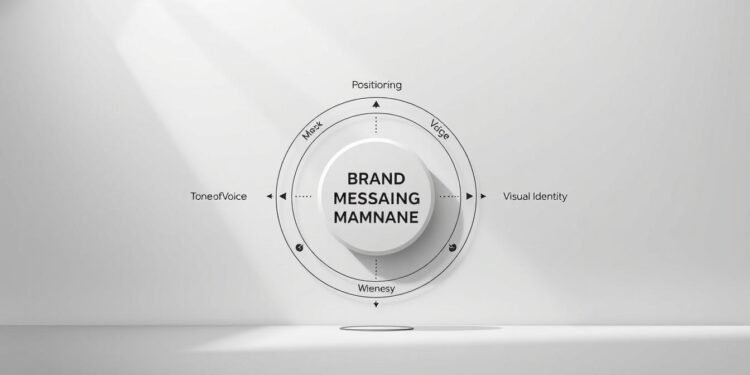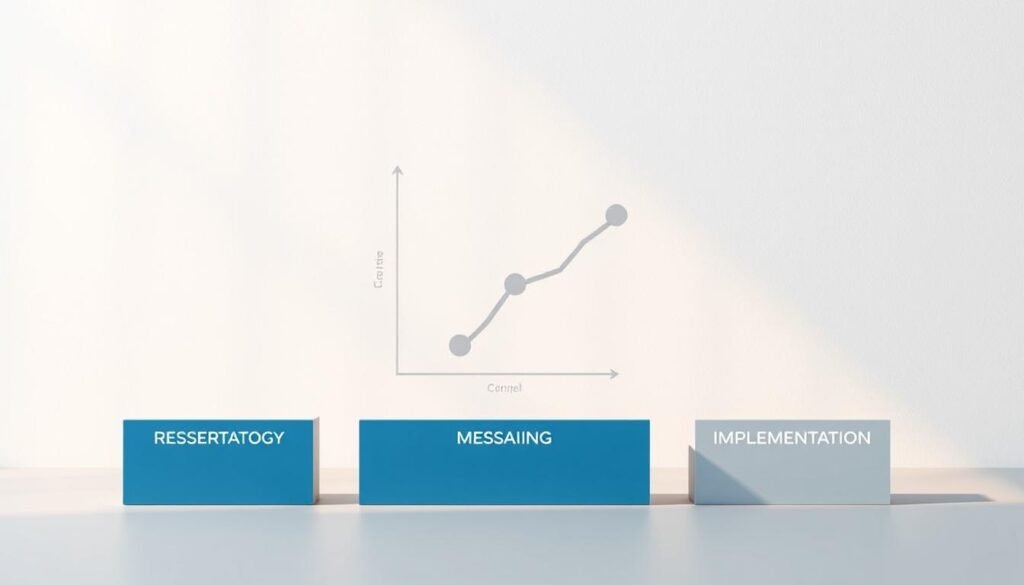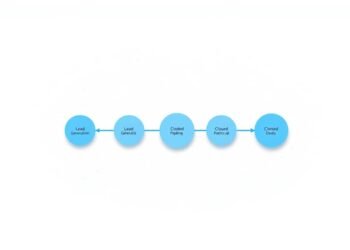Did you know customers decide whether they trust your business in just 7 seconds? First impressions matter—especially when 81% of shoppers need confidence in a company before buying. Without a strong foundation, even the best products can get lost in the noise.
Standing out isn’t just about visuals—it’s about clarity. A well-structured approach helps businesses boost revenue by 10-20% through consistency. Authenticity matters too, with 88% of consumers favoring genuine connections over polished ads.
So, how do you build trust while keeping your marketing sharp? The answer lies in crafting a strategy that aligns your voice, values, and goals. We’ll break down the steps—plus share a free template to get you started.
Key Takeaways
- First impressions form in just 7 seconds.
- 81% of buyers need trust before purchasing.
- Consistent strategies can increase revenue by 10-20%.
- 88% of shoppers prefer authentic communication.
- A structured approach keeps your marketing focused.
What Is a Brand Messaging Framework?
Every successful company has a hidden blueprint—its core narrative. This messaging framework acts like DNA, shaping how you communicate internally and externally. It’s the glue that ties your mission, voice, and value proposition together.
Think of it as a filter for every marketing decision. Unlike taglines (like Apple’s “Think Different”), it’s deeper—a guide for all content, from emails to ads. Yet, 15% of businesses operate without one, risking mixed signals.
Key components include:
- A mission statement (your purpose).
- A value proposition (why customers choose you).
- Voice guidelines (consistent tone across channels).
When done right, this brand core ensures every word aligns with your identity. It’s not just what you say—it’s how you stay unforgettable.
Why Is a Brand Messaging Framework Important?
77% of shoppers prefer companies that align with their beliefs. A unified strategy isn’t just nice to have—it’s the backbone of customer trust and growth.
Building Trust with Your Audience
Consistency matters. 81% of buyers need to trust a company before purchasing. When your voice stays the same across emails, ads, and social media, shoppers feel secure.
WordPress.com nails this. Their value proposition—”Democratize Publishing”—resonates globally. By sticking to this mission, they’ve built a loyal community.
Standing Out from Competitors
Glad’s influencer campaign doubled engagement by focusing on sustainability. They didn’t just sell trash bags—they sold a greener lifestyle. Differentiation starts with clarity.
Without guidelines, 47% of businesses publish off-brand content. A framework keeps your message sharp and recognizable.
The payoff? Companies with consistent strategies see 10–20% higher revenue. Every word you choose impacts your bottom line.
Key Components of a Brand Messaging Framework
Your company’s identity hinges on three critical elements. These pillars shape how customers perceive you—and whether they choose you over competitors.
Mission Statement
A mission explains why your business exists. Nike’s “Bring inspiration and innovation to every athlete” fuels everything they do. It’s aspirational, not just transactional.
Apple contrasts this with its brand promise: “Think Different.” The mission (empowering creativity) drives the promise (challenging norms). Both are core to their strategy.
Value Proposition
This is your unique reason to be chosen. Zapier’s website nails it: “Automate your work across 5,000+ apps.” No fluff—just clarity.
BMW’s “Ultimate Driving Machine” distills luxury and performance into four words. A strong value proposition cuts through noise.
Brand Voice and Tone
Consistency here builds trust. Liquid Death’s edgy TikTok persona (“Murder your thirst”) matches its rebellious packaging. Every post reinforces their voice.
HubSpot uses a friendly, expert tone. Whether it’s a blog or email, their style feels familiar. That’s the power of guidelines.
How to Create a Brand Messaging Framework
A clear roadmap turns vague ideas into actionable strategies. Follow these steps to build a foundation that resonates with your audience and stands out in a crowded market.
Step 1: Define Your Brand’s Mission
Start with why. Hulu’s ad strategy targets middle-aged homeowners by aligning with their desire for convenience. Your mission should answer: What problem do you solve? Keep it concise, like Tesla’s “Accelerate the world’s transition to sustainable energy.”
Step 2: Research Your Target Audience
Go beyond demographics. Ask psychographic questions: What values drive their decisions? Tools like surveys or social listening uncover pain points. For example, Workday’s ads speak directly to HR managers overwhelmed by outdated software.
Step 3: Analyze Competitor Messaging
Identify gaps in their strategies. Compare taglines, social posts, and value propositions. Geico’s “15-minute promise” succeeds by combining clarity and urgency—two often-overlooked elements.
Step 4: Craft Your Unique Value Proposition
Highlight what makes your product irreplaceable. Use the 3 C’s:
– Consistency: Maintain one voice across channels.
– Clarity: Avoid jargon (e.g., “cloud-based” vs. “access files anywhere”).
– Character: Inject personality, like Mailchimp’s playful tone.
Test your message with A/B surveys before finalizing. A strong UVP, like Airbnb’s “Belong anywhere,” simplifies the customer journey from curiosity to conversion.
When and Where to Use Your Brand Messaging
Effective communication thrives on precision and placement. Your strategy should adapt to each platform while staying true to your core identity. Here’s how to maximize impact where it matters most.
Social Media: Platform-Specific Adaptations
Tailor your tone to each audience. LinkedIn thrives on professional insights, while TikTok rewards humor and trends. Glad’s influencer collaboration doubled engagement by matching creators’ authentic styles—not forcing scripts.
Avoid generic posts. Under Armour’s search ads use athlete-driven phrases like “Train harder” to resonate with fitness enthusiasts. Consistency in voice, not copy-paste content, builds trust.
Website and Advertising: Seamless Integration
Your website is the hub of your strategy. Zapier aligns blog content with search intent, like “Automate repetitive tasks,” to drive organic traffic. HipLink’s live chat mirrors their helpful, tech-savvy persona—key for instant customer connections.
For campaigns, consider OTT ads. A family-focused brand might highlight convenience in streaming commercials. Every touchpoint should feel familiar, from Instagram stories to email subject lines.
- Test platform variations: A/B different tones for Twitter vs. Facebook.
- Audit regularly: Ensure your homepage reflects current priorities.
- Prioritize authenticity: Forced influencer partnerships backfire (source: Social Media Today).
Brand Messaging Examples to Inspire You
Great companies don’t just talk—they connect through carefully chosen words. These brands prove how precise language drives engagement, trust, and conversions.
Liquid Death’s Gen-Z Slang: Their TikTok campaign embraced terms like “mid” (average) to mock competitors. By speaking Gen-Z’s language, they doubled engagement. It’s a masterclass in cultural relevance.
Under Armour’s Ad Language: Phrases like “Rule Yourself” and “Protect This House” target athletes’ competitive experience. Every word fuels motivation, not just sales.
Workday’s Power Words: Their display ads use terms like “streamline” and “effortless” to appeal to HR managers. Clear, action-driven words simplify complex software benefits.
Zapier’s Website Terminology: Instead of tech jargon, their blog uses phrases like “automate the boring stuff.” It’s one of the ways they demystify automation for beginners.
HipLink’s Chatbot Scripts: Their bots ask, “Need help fast?”—mirroring real conversations. This approach turns customer service into a seamless experience.
Each example shows how adapting tone, slang, or clarity in unique ways strengthens connections. For more tactical tips, explore our free template in the next section.
Free Brand Messaging Template
A ready-to-use template can save hours of brainstorming and streamline your strategy. Our free brand messaging resource gives your team a head start with proven structures that convert.
This comprehensive tool includes seven essential sections. Each element helps align your communication across departments. From mission statements to voice guidelines, everything stays consistent.
Key features of our template:
- Editable brand voice section – Define tone for different audiences
- Keyword integration column – Align content with SEO priorities
- Competitor analysis worksheet – Identify gaps in rival strategies
The bonus implementation checklist ensures your entire team stays on track. Marketing, sales, and support can all reference the same core message.
Download this brand messaging template today to turn ideas into action. It’s the fastest way to create unified, compelling communication that resonates.
Conclusion
Building a strong strategy takes time but pays off. Follow the 7-step process to align your voice, audience, and values. Avoid pitfalls like inconsistent updates—13% of businesses lose impact by skipping reviews.
Use tools like WRITER’s style guide to audit content regularly. Keep teams unified with shared docs. This ensures every piece reflects your core identity.
Ready to start? Download our free template today. Turn planning into action with a clear roadmap for success.
FAQ
What is the purpose of a messaging framework?
It helps businesses communicate clearly and consistently. This ensures customers understand the core benefits and values of a product or service.
How does a strong value proposition help in marketing?
It highlights what makes your offer unique. This attracts the right audience and differentiates you from competitors.
Why is tone important in content creation?
A consistent voice builds recognition and trust. It ensures your audience connects with your message in a relatable way.
What’s the first step in developing a messaging strategy?
Start by defining your mission. This sets the foundation for all future communication efforts.
Where should businesses apply their messaging guide?
Use it across social media, websites, and ads. Consistency strengthens impact and reinforces key ideas.
Can small businesses benefit from this tool?
Absolutely. Even startups need clarity to compete effectively. A structured approach saves time and boosts results.
How often should messaging be updated?
Review it annually or when market trends shift. Keeping it fresh ensures relevance without losing core identity.
What’s the best way to test messaging effectiveness?
Run campaigns with A/B testing. Analyze engagement metrics to refine words and strategies.










